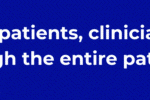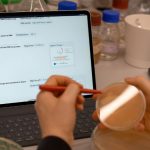
What benefits can intelligence in the track and trace space offer healthcare, and what does the future look like for this kind of technology? HTN sat down for a chat with Nick Westall, chief technical officer at Athera Healthcare, to find out his thoughts.
Athera works with a range of customers – predominantly the NHS in the UK or HSC organisations in Ireland – to improve patient outcomes by bringing together data-driven insights, technology and personalised strategy. Within this, Nick is responsible for all things tech, from products to the service delivered to customers to internal operations. He brings experience in a variety of areas across the industry, usually focusing on supporting organisations to realise ambitions around digital transformation or assisting with tackling challenges.
Key challenges
As a company Athera Healthcare is growing by acquisition as well as organically, so Nick noted that integrating organisations can be a challenge; particularly when it comes to developing a synergy for growth and achieving productivity. Additionally, through the acquisitions that Athera is making along with some already made, the organisation has products under its umbrella which have been in existence for nearly 30 years. This raises a challenge, Nick said, in ensuring that these products stay relevant, offer up-to-date functionality, and can be expanded for wider use.
“There’s also the fragmentation of healthcare environments. The NHS has over 580 different software packages in use. More often than not, we find that there are gaps between those systems which are being filled by manual use Excel spreadsheets – they are instantly out of date and you end up with islands of data as a result needing to be brought together from different sources. You can do that manually, and it might be simple enough if you are trying to solve one particular problem, but the next time there’s a need to solve a different problem the work needs to be redone. It’s highly inefficient and ineffective.”
Integration between Athera systems and others is a key focus moving ahead, Nick explained, along with “the business intelligence and healthcare intelligence that sits on top of that, so that we can help the clinicians understand what it is they can do within their environment to achieve better patient outcomes? Our aim is to help them work as efficiently, effectively and fast as they can, with real-time updates.”
One of the ways in which Athera aims to support this, and to tackle the challenge of integration, is by establishing an Athera common platform for all of their products and migrating all products onto that platform.
Intelligence in track and trace
Nick shared some of his views on the role of intelligence in healthcare, particularly in the track and trace space with regards to what this technology can help with at present and what we might see in the future.
“Every single customer I speak with wants greater intelligence from the information that they already have,” said Nick. “They want to bring those islands of information together. Some organisations are making good progress in this area; some have really strong plans that are well advanced in terms of trying to integrate particular systems. We are actively driving that at present for our customers, and doing it in such a way across the common platform that if we provide one level of integration anywhere on the platform, it becomes available for all associated products in our suite.”
Nick noted that there has been “fantastic feedback” from customers with regards to how they can use Athera’s products to share information and get information out of the system, in comparison to competing software. “This has allowed them to make massive changes in terms of how they operate, improve their efficiency and effectiveness, and reduce costs whilst improving services.”
Athera’s solutions in practice
Across the HSC in Ireland, Athera is the sole provider for sterile services solutions with its Fingerprint product, and is also driving the integration of information to provide a single view to track equipment and implants. “We’re bringing integration and information from all implant providers proactively, to help hospitals and clinicians to understand what resources they have and ensure that they have the right implant for the right patient.”
Athera is also working with loan set providers (enabling the ordering of implants and instruments for scheduled surgeries), to integrate their operations, equipment and data “swiftly and easily into hospital records, and then back again. This supports the loan set providers to work efficiently, and it also means that hospitals are only taking the equipment that they specifically need and therefore investing smartly. It also helps them to better understand their own resourcing.”
Nick went on to share some newly-released statistics from one of Athera’s NHS customers showcasing the impact that the solutions have had.
“For fingerprint implementation, the organisation has halved turnaround time on trays of equipment; they are able to process 110 trays per hour, going up from 50 four years ago. That’s well above the benchmark of 70 per hour in private hospitals, and saves them approximately £1,500 per hour on the decontamination department.”
Other statistics include an increase in work volume by 20 percent, with 30 percent less staff; reduction in non-conformities to 0.03 percent against an industry benchmark of 0.5 percent; and the sterile services department have gone from walking a reported average of 12,000 steps per day around the department to 6,000 steps per day.
The organisation has also reduced its waiting list to 62 weeks, the target for the NHS “but way ahead of most other hospitals right now”.
“This has all been achieved by making some manual processes more efficient and automated,” Nick said. “It’s everything that we would hope a customer is able to say; that they are doing more with less, and they are doing it faster. We’re looking to drive this approach across each of our customers and support others to benefit in the same way.”
Plans for the immediate future…
On the establishment of Athera’s common platform, Nick described how this work will involve “accelerating the integration for both our existing products and those that are going to be on the new platform, bringing in business intelligence capability and enhancing and extending what we already do.”
There are plans to extend the Athera insights product designed to help organisations through national audits to drive research and improve patient outcomes. “In the NHS, that’s a four-stage process, and our products and software very much pitch us into the second stage around data collection and analysis. We want to push up into stage one and also reach into stages three and four. In some instances, this will see the extension of the existing product; in others, it will involve new products being brought in to sit alongside those already in the suite.”
Regarding acquisitions, Nick said that new healthcare products and software solutions are set to join Athera’s existing suite in the hopes of extending coverage of their customer’s operations, and allowing Athera to bring data together in a seamless way for its customers.
Athera also plans to release new versions of certain products with more information to follow in the coming months. “These products will take us into other parts of the industry and the market that are not covered particularly well at the moment – we believe that we can add a lot of value in these areas.”
… and in five years’ time
Along with providing a broader suite of solutions for customers at operational, tactical and strategic level, Nick expects the future to see Athera’s Health Intelligence platform “available in its own right – you won’t need to take an existing product from our suite in order to access it. We’ll also be integrating together many more systems in a proactive fashion for our customers so they can save money and stop spending time trying to figure out what’s going on. They will know what is going on; the question will be what are they going to do about it. It will become a positive circle of improvement for them.”
Nick expects to see greater consistency and scope of use of existing products. He noted existing inefficiencies such as loan sets getting ordered but not actually used, but still requiring cleaning; and the fact that equipment within hospitals sometimes does not get scanned as it should, meaning that its journey and location cannot be traced. “I think we will see an increased level of automatic tracking of equipment like this within hospitals and between them, and also between providers. This means they will be able to drive out unnecessary stock from within the supply chain and they will also be able to ensure that equipment is proactively in the right place at the right time. This will reduce the costs to hospitals and providers alike, while delivering more operations. That will become the norm and the default, as opposed to a heavy manual process that has to be undertaken today.”
Another prediction is that there will be “much greater collaboration between organisations in the supply chain,” said Nick, noting that organisations tend to be aware of the data they hold and its quality – and the fact that it only offers one perspective on a situation. “Being able to bring in other perspectives makes everyone’s data more valuable.”
Additionally, Nick said that Athera’s scope will “dramatically increase” across Europe and the rest of the world, and across healthcare settings.
Health tech for the future
What is Nick most excited about for the future, when it comes to the health tech landscape?
“I’m excited about the breadth and the scale of the opportunities provided by health tech and the healthcare setting,” said Nick. “At the moment it is hugely fragmented, and there’s a lot of data out there but the problem is going to be the quality.”
He also commented on the surge in artificial intelligence in this sector. “One of the greatest challenges we have is for AI to actually deliver the benefits that it has the potential for. And that comes back to the need for good quality data.”
Thank you to Nick for sharing his insights.






